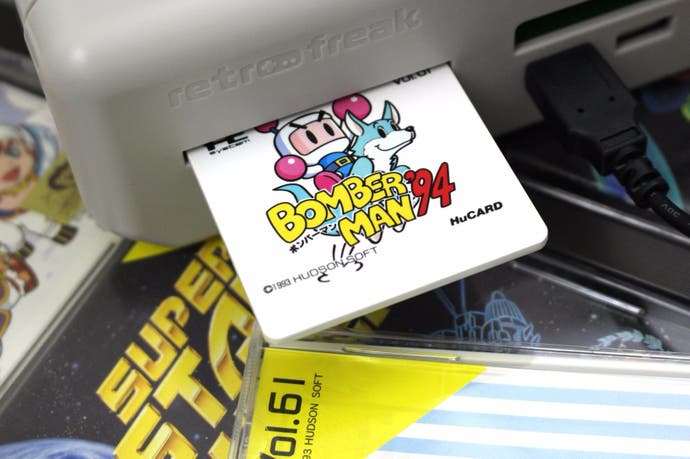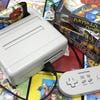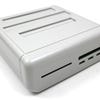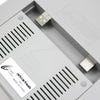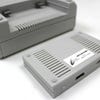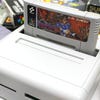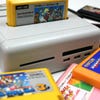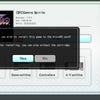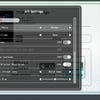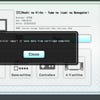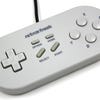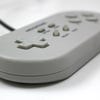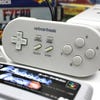Cyber Gadget Retro Freak review
Seven retro consoles in one box - but is it better than the Retron 5?
After a legion of retro clones offering inconsistent performance on a tight budget, 2014's Retron 5 was a breath of fresh air. Positioned as an all-in-one solution for your vintage gaming needs, Hyperkin's Android-powered console covered a wide range of formats - including SNES, Mega Drive and Game Boy Advance - and came with a raft of emulator-specific features, such as save states and screen filters. It was almost inevitable that rivals would appear following the same approach, and the first out of the gate is the Japan-made Retro Freak, courtesy of a tiny company called Cyber Gadget. A cursory glance at the spec sheet reveals a close match for the Retron 5, but there are some key differences - some very positive, others less so.
On a purely physical level, the Retro Freak is a console you'd struggle to call eye-catching. It's boxy, grey, and covered in cartridge slots for the various formats it supports, making it look like some kind of nightmarish swiss cheese. In its favour, the Retro Freak is noticeably smaller than the Retron 5 and therefore easier to fit underneath your television. Cyber Gadget's machine offers an added bonus in that it's actually comprised of two parts - the main unit, which contains the brains of the system, and the cartridge adapter, which is by far the larger of the two and can be separated from the main unit when you're not using it.
Unlike the Retron 5, the Retro Freak allows you to dump ROMs from cartridges onto a MicroSD card, and once you've done that you can disconnect the cartridge adapter and store it away if you so wish. This makes the system even easier to integrate into your cramped entertainment setup - the main component of the console is roughly the size of a SNES cartridge.
The list of vintage formats supported by the Retro Freak is dazzling: Famicom, Super Famicom/SNES, Mega Drive/Genesis, Game Boy, Game Boy Color, Game Boy Advance and PC Engine / TurboGrafx-16. It's also possible to play Master System titles with a Power Base Mini adapter, and Cyber Gadget is working on its own adapter, supporting Sega's 8-bit console as well as its handheld relative, the Game Gear. The inclusion of support for the NEC's beloved PC Engine gives the Retro Freak a sizeable advantage over the Retron 5, but the lack of NES support is puzzling - however, a third-party adapter is available to overcome this problem, so it's far from a deal breaker but still not ideal.
Unlike the Retron 5 - which came bundled with its own bespoke wireless controller and was festooned with ports for NES, SNES and Mega Drive pads - the Retro Freak offers a wired solution via the three USB ports on the front of the machine (or if you're using the smaller main unit, two USB ports). You get a controller in the box that shares more than a passing resemblance to the classic SNES pad, but most USB options will work here. We tested a Sony DualShock 4 over a wired connection and it performed flawlessly; similarly, the legendary Sega Saturn controller - linked up via a special USB adapter - worked without any issues.
The absence of Bluetooth support for wireless control is disappointing, but it's by no means a fatal problem - and while we would have liked to have been able to dust off those original pads for a truly authentic experience, the wide selection of USB controllers on the market means you're unlikely to be short on choice. If you really, truly want to play with your existing pads, Cyber Gadget has produced an optional adapter, available separately or bundled with the more expensive premium edition of the system.
As you might expect, the process of playing a game on the Retro Freak is slightly different to playing it on original hardware. Inserting of a cartridge into one of the console's multitude of slots triggers a software and save data dump and - if the game exists in the machine's database - a title appears, along with information such as the developer and release date. Before loading up the game you can tinker with various settings, including screen filters, button layout and cheats. It's even possible to apply patches to games; if you have an obscure Japanese RPG that has been fan-translated into English, you can apply that patch to the original cartridge.
Screen filters are essentially the same ones that were offered on the Retron 5, and are best ignored unless you prefer to play your games through what looks like a thick layer of grease. Scanlines can be applied to emulate the appearance of running them on an old-school CRT TV set, but this is essentially another filter which is laid over the top of the image, and the scanlines have no correlation with the actual pixels on-screen. The end result is acceptable in many cases, but it's a long way from being totally authentic.
In fact, we'd advise you simply leave the image as it is - the console's 720p HDMI output may not be faithful to how we used to play video games on our humble Tandy 14-inch portables in the early 90s, but it makes pixel artwork positively sing. Purists will scoff and insist that using a CRT and an expensive upscaler is the only real choice but for everyone else, retro gaming has arguably never looked so good - outside of the Retron 5 or any other Android-based set-top box, of course.
Emulation is on par with the Retron 5, which shouldn't come as a massive shock when you learn that both machines are powered by the same Rockchip 3066 SoC and both utilise an OS based on Google's Android platform. To the casual player the difference between playing a game on the Retro Freak and playing it on the original hardware is almost undetectable; we noticed that the sound is slightly off on some NES and Mega Drive games, but otherwise this is a close match to the real thing. It's not 100 percent authentic, but the only way to get that is to use the original consoles, or opt for a clone system which imitates on a hardware rather than software level. Even if you decide to take such options, you're missing out on the convenience afforded by a system that covers so many retro platforms.
The Retro Freak's ability to play ROMs straight out of the box is yet another plus point over the Retron 5, which must be hacked to perform the same task. ROMs dumped on the console are encrypted so they cannot be used on other systems - if that's your aim, then you'll need to invest in a Retrode 2. However, ROMs can be downloaded from the internet and run from the system, giving the Retro Freak a somewhat inconsistent approach to the piracy issues surrounding retro emulation.
Another way of looking at it is that the Retro Freak could well be all things to all men: purists can use their original original carts, while devious downloaders have the option to ignore this element entirely, removing the bulky cartridge adapter and simply using the main "brain" of the console - a highly-portable slab of plastic that can easily be taken around to friend's houses for a spot of old-school action. With the Retron 5, this level of flexibility simply isn't on offer.
Cyber Gadget Retro Freak: the Digital Foundry verdict
The Retro Freak may have caused waves when it was first announced, but in the cold light of day it's a very similar machine to the Retron 5 and offers few genuine surprises. It runs the same basic hardware and OS and offers the same features - save states, patch support and screen filters being just three examples. The ability to run PC Engine games is a clear and obvious bonus, but this is mitigated slightly by the lack of support for NES carts and the reliance on wired USB pads as opposed to the wireless controller that ships with Hyperkin's machine. The Retro Freak also lacks the ability to accept original pads, unless you're willing to spend a little more cash.
With the two systems virtually tied when it comes to price - the Retron 5 costs £129.99 while the Retro Freak is around £110, not including shipping from Play-Asia - it may well be personal preference that dictates your purchasing decision. Both machines are excellent retro gaming platforms that output crisp 720p video and support a wide range of welcome features, and weighing up the pros and cons of each unit is a vital procedure if you're unsure of which to go for.
Should wireless control, original pads and NES support be high on your list, Hyperkin's machine is a sound choice, but the inclusion of PC Engine compatibility and the opportunity to dump ROMs for personal use is likely to make the Retro Freak a more attractive proposition to a wider range of gaming enthusiasts - even though NES and original controller support is only possible with additional hardware.
Thanks to Play-Asia for kindly supplying the Retro Freak console used in this review.
